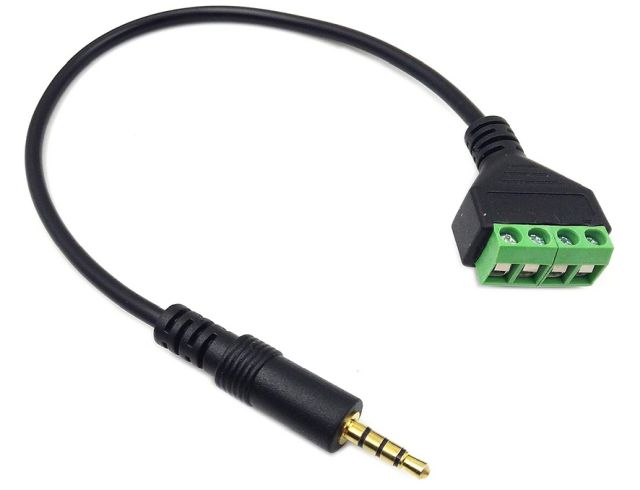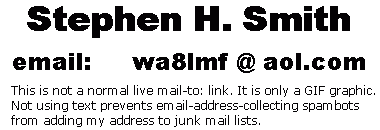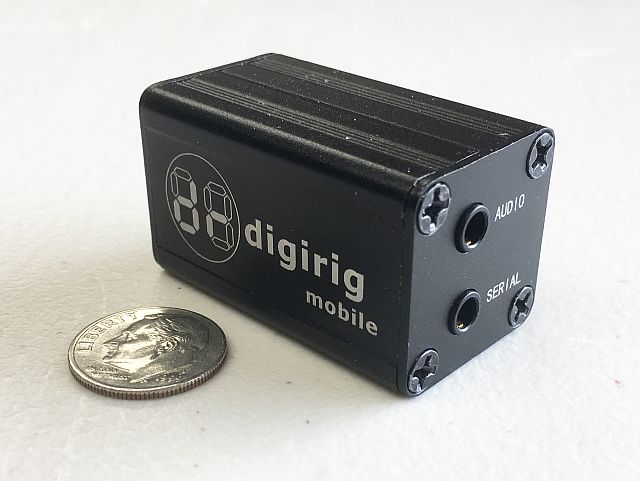
| WA8LMF Home Page | Useful Links | Resume | Updated 21 March 2022 |
The "Digirig Mobile" is an extremely compact & rugged "sound card interface" for amateur radio digital modes operation. This device is available directly from it's manufacturer in Grand Junction, Colorado for USD $50. Their somewhat confusing website is at:
"Soundcard Interface" strictly speaking is incorrect, because the DigiRig is not just an audio coupler for a computer sound system. It contains it's own internal sound system, in a manner similar to a TigerTronics SignaLink. Unlike the Signalink, the DigiRig does not use VOX PTT keying. It uses hard PTT keying via either the classic serial-port RTS handshake line or via CAT data command strings.
The device contains:
Versions of Windows, XP or higher, will automatically download and install the required drivers. No separate explicit install of drivers is required.
The serial port can be used two ways:
The single PC board is contained in a square cross-section aluminum extrusion 1 inch (2.54cm) x1 inch (2.54 cm) x 1.5 inches (3.8 cm) long. One end has two 4-contact "TRRS" (Tip-Ring-Ring-Sleeve) 3.5 mm jacks. One is for the TX audio, RX audio and classic RTS transmit keying. The other is the RXD and TXD serial connections used for CAT control. (All pics taken with an iPhone 6S+ and tweaked in IrfanView)

The other end has a single USB-C jack for connection to the computer being used. The manufacturer offers a USB-C to USB-A cable with an interesting twist: The cable is curly and stretchy like an old telephone handset cord, or a hand-mic cable.
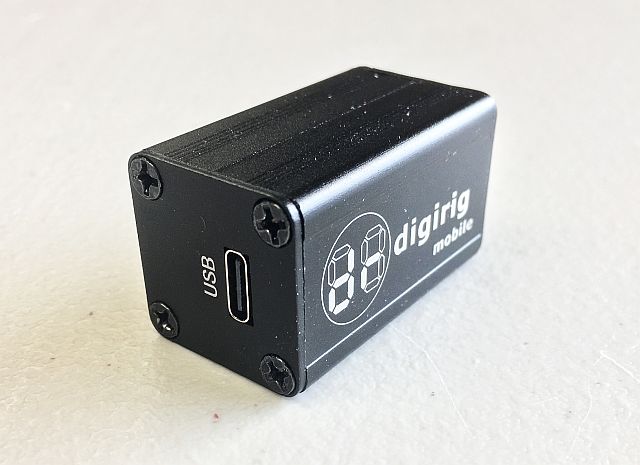
Inside the housing is a single tiny PC board with surface-mount components. This is version 1.8 of the device which was just released when I received my Digirig at the beginning of March 2022.
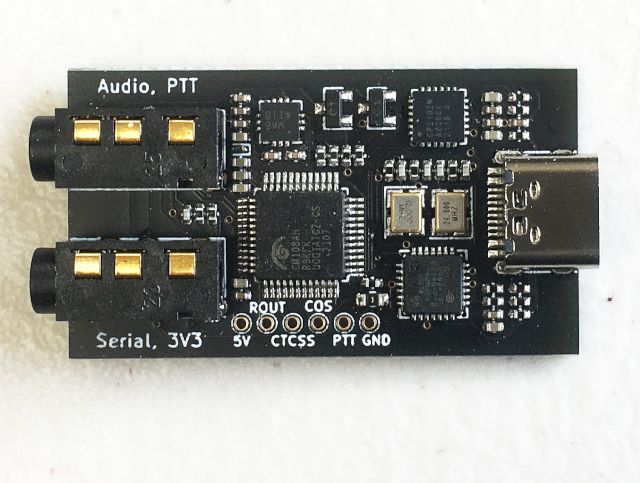
The other side of the board has several solder-bridge pads for setting configurations. The board includes support for Icom's screwy single-wire serial bus called CI-V.
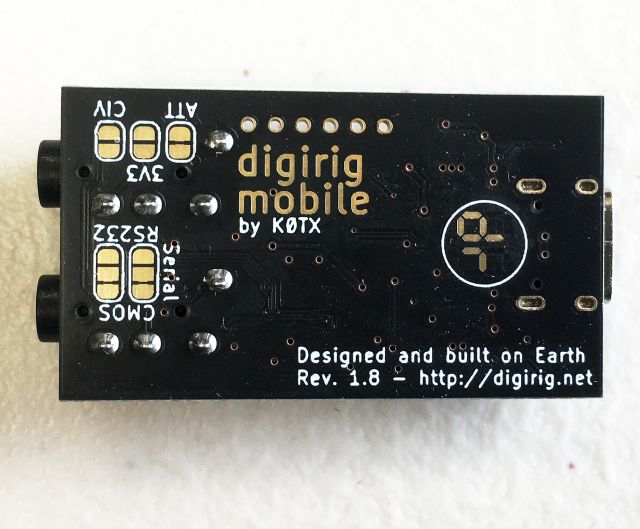
The manufacturer offers several pre-made cable
assemblies to connect to various radios, including to the two-prong plug used by
Kenwood, Wouxun and Baofeng handhelds.
The designer seems totally enamored of CAT-type control
interfaces. DigiRig offers a cable kit for the Yaesu FT-8xx radios (FT-817,
FT-818, FT-857, FT-891, FT-897, etc) that provides TWO cables: The 6-pin
mini-DIN cable for TX/RX audio hookup, and the 8-pin mini-DIN serial cable for
CAT-style PTT keying.
In a similar manner, DigiRig offers a pair of cables for the
larger Kenwood radios equipped with the "ACC2" 13-pin full-sized DIN
connector, assuming you will use the separate serial port on these radios for
CAT-based PTT control.
In both cases, the DIN-plug cables also carry the traditional ground-to-transmit hard-keying PTT line, giving you the choice of classic RTS handshaking-line transmit keying or using the second (serial) cable for CAT-type command-string transmit keying.
[Tying up the serial port just for PTT control is a significant disadvantage -- it prevents using the 8-pin mini-DIN port on the Yaesu radios,
or the serial com port on Kenwoods, for logging
applications or for activating external "smart" amplifiers, antenna tuners or "screwdriver"
mobile antenna
controllers.]
Further, many older soundcard digi-mode apps only support the traditional RTS transmit keying method; they don't support the dozens of proprietary radio-specific CAT commands for TX keying. either directly, or through "middleware" apps such as FLrig or HamLib.
If you want to fabricate your own cable(s):
In the past, cables with the 3-contact TRS 3.5mm plug molded on (i.e. stereo headphone/audio cables) were readily available, while ones with the 4-contact TRRS plug were very hard to find. This has now changed radically. A vast array of 4-contact TRRS 3.5 mm plugs, jacks and molded cables are now available from eBay and Amazon.
Note that there are two conventions for the use of the 4-cond plug.
DigiRig uses the classic pinout with COMMON/GND on the sleeve of the plug. Take this into account when buying TRRS patchcords to cut up for making cables.
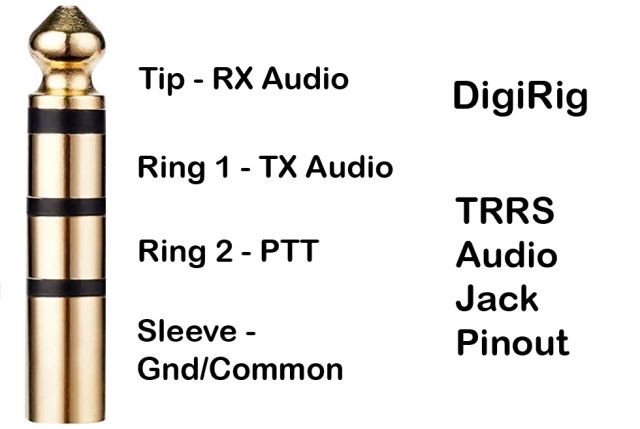
A useful tool for experimenting with the DigiRig, and
for making up custom cables, is this break-out block. It lets you connect bare
flying leads from any kind of cable to the TRRS jacks in the DigiRig, using
set-screws.
This cable is also useful for breaking out the TRRS combined
speakers+mic jacks of phones, tablets or small laptops, for use with other
soundcard interfaces that have separate TX and RX jacks. This adapter is available from Amazon, for USD $9.00, at:
